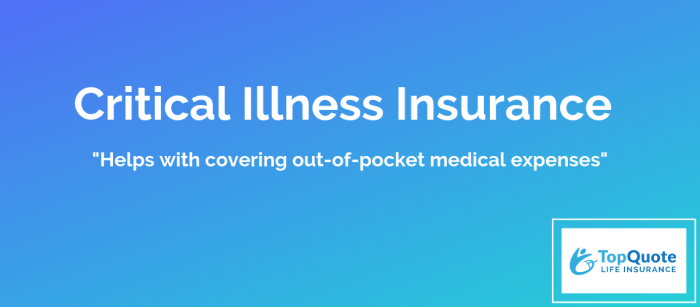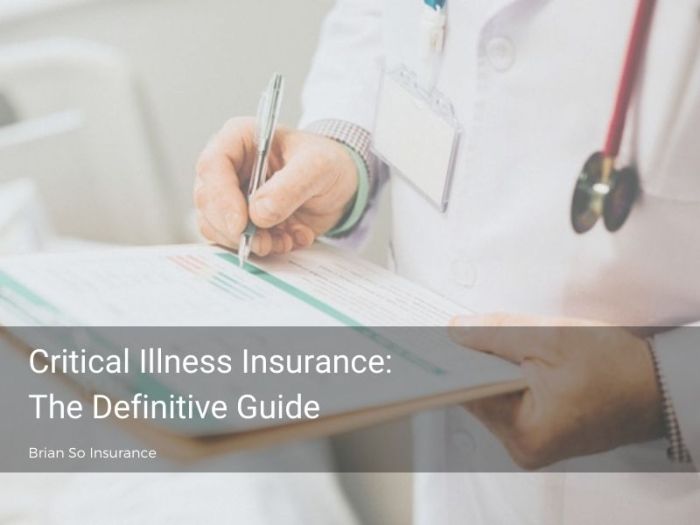Navigating the world of insurance can feel overwhelming, especially when considering critical illness coverage. With advancements in medical technology and rising healthcare costs, securing the right critical illness insurance policy in 2025 is more crucial than ever. This comprehensive guide will equip you with the knowledge to make an informed decision, ensuring you and your loved ones are financially protected during challenging times.
Understanding Critical Illness Insurance
Critical illness insurance provides a lump-sum payout upon diagnosis of a specified critical illness. This financial safety net helps cover medical expenses, lost income, and other related costs, allowing you to focus on your recovery without the added burden of financial strain. Unlike health insurance, which covers medical treatments, critical illness insurance focuses on providing financial support after a diagnosis.
Key Differences from Other Insurance Types
- Health Insurance: Covers medical expenses for treatment and care. Critical illness insurance does
-not* replace health insurance. - Life Insurance: Pays out a benefit upon death. Critical illness insurance provides a benefit
-during* your lifetime upon diagnosis of a covered illness. - Disability Insurance: Provides income replacement if you are unable to work due to illness or injury. Critical illness insurance supplements this by providing a lump sum for specific illnesses.
Factors to Consider When Choosing a Critical Illness Policy in 2025
Selecting the right policy requires careful consideration of several key factors. Let’s delve into the essential aspects to ensure you’re adequately protected.
1. Covered Illnesses and Definitions
Policies vary significantly in the range of critical illnesses they cover. Some policies offer comprehensive coverage, including common cancers, heart attacks, strokes, and organ failure, while others may have more limited lists. Carefully review the policy document’s definition of each illness, as subtle differences in wording can impact your claim eligibility. Look for policies that cover a broad spectrum of critical illnesses and use clear, unambiguous definitions.
Consider policies that include emerging critical illnesses.
2. Benefit Amount
The benefit amount is the lump-sum payment you receive upon diagnosis. Determining the appropriate benefit amount requires careful consideration of your current financial situation, potential medical expenses, lost income, and future financial goals. It’s advisable to calculate the potential costs associated with your treatment and recovery, including medical bills, rehabilitation, medication, and lost wages. A financial advisor can assist you in determining a suitable benefit amount.

Source: briansoinsurance.com
3. Waiting Period
The waiting period is the time that must elapse between policy purchase and the onset of a covered illness before you can claim. Policies typically have waiting periods ranging from 30 to 90 days. Shorter waiting periods are generally preferable, but may come with a higher premium. Understand the implications of the waiting period before making a decision.
4. Premium Payments
Critical illness insurance premiums vary depending on factors such as age, health status, coverage amount, and the insurer. Consider your budget and choose a payment plan that aligns with your financial capabilities. Compare premiums from multiple insurers to ensure you’re getting the best value for your money. You can explore options like single-pay, annual, semi-annual, or monthly premium payments.

Source: topquotelifeinsurance.com
5. Policy Term
Critical illness policies are available for various terms, ranging from a few years to lifelong coverage. Consider your age, health status, and long-term financial goals when choosing a policy term. Longer terms offer greater protection but typically come with higher premiums. Shorter-term policies are more affordable but offer limited coverage over a shorter period.
6. Insurer’s Financial Stability and Reputation
It’s crucial to choose a financially stable and reputable insurer. Research the insurer’s financial strength ratings from independent agencies like A.M. Best or Moody’s. Look for insurers with a proven track record of paying claims promptly and fairly. Check online reviews and seek recommendations from trusted sources.
7. Additional Benefits and Riders
Some policies offer additional benefits or riders, such as coverage for early-stage diagnosis or additional payouts for specific illnesses. These add-ons can enhance your protection but will increase your premium. Evaluate the value of these additions based on your individual needs and risk profile. Consider features such as waiver of premium, accelerated death benefit, or return of premium options.
Frequently Asked Questions (FAQ)
- Q: How much critical illness insurance do I need? A: The amount depends on your individual circumstances, including potential medical expenses, lost income, and financial goals. Consult a financial advisor for personalized guidance.
- Q: Can I get critical illness insurance if I have a pre-existing condition? A: Insurers assess your health status, and pre-existing conditions might affect your eligibility or premium. Full disclosure is crucial.
- Q: What happens if I’m diagnosed with a condition not listed in the policy? A: You won’t receive a payout if the condition isn’t explicitly covered in your policy. Carefully review the covered illnesses.
- Q: Can I change my policy later? A: Some policies allow for adjustments, but options may be limited. Discuss this with your insurer before purchasing.
- Q: How do I file a claim? A: The claim process varies by insurer. Your policy documents will Artikel the necessary steps and required documentation.
Choosing the Right Critical Illness Insurance for You
Securing the right critical illness insurance policy is a crucial step in safeguarding your financial future. By carefully considering the factors discussed above and comparing different policies, you can find a plan that aligns with your individual needs and budget. Remember, seeking professional advice from a financial advisor or insurance broker can significantly simplify the process and ensure you make an informed decision.

Source: briansoinsurance.com
Sources
- Investopedia – Critical Illness Insurance
- NerdWallet – Critical Illness Insurance
- (Add other relevant and reputable sources here)
Call to Action
Don’t wait until it’s too late. Contact a trusted insurance provider today to discuss your critical illness insurance needs and secure the financial protection you deserve. Protect your future, protect your family.
FAQ Guide
What is the difference between critical illness insurance and health insurance?
Health insurance covers medical expenses, while critical illness insurance provides a lump-sum payout upon diagnosis of a specified critical illness, regardless of medical expenses.
How long does the claims process typically take?
Claims processing times vary by insurer, but generally range from a few weeks to several months, depending on the complexity of the case and the required documentation.
Can I increase my coverage later?
Some policies allow for coverage increases, but this may depend on your health status and the insurer’s underwriting guidelines. Check your policy details for specific information.
What happens if I develop a critical illness after my policy expires?
Coverage ends upon policy expiration. You would need to secure a new policy, subject to underwriting, to maintain protection.
